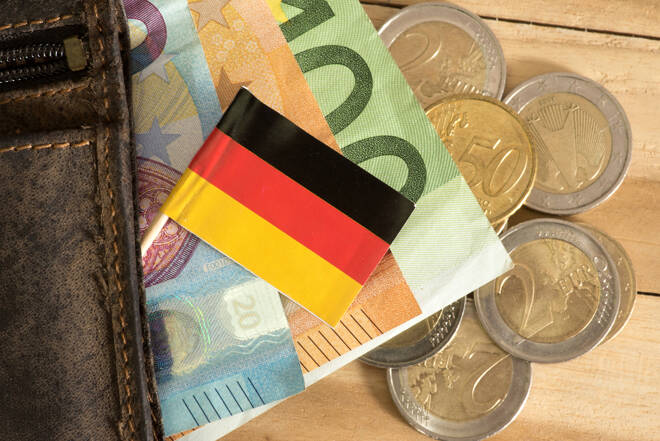Advertisement
Advertisement
A Bounce Back in German Private Sector Activity Fails the EUR
By:
While a rebound in German private sector activity was positive, Eurozone private sector activity slowed to an 11-month low in January.
In this article:
It was a busy day on the Eurozone economic calendar. Prelim January private sector PMIs for France, Germany, and the Eurozone were in focus.
Member States
In January, France’s manufacturing PMI slipped from 55.6 to 55.5, with the services PMI declining from 57.0 to 53.1. Economists had forecast PMIs of 55.5 and 55.3 respectively.
Germany’s manufacturing PMI jumped from 57.4 to 60.5, with the services PMI rising from 48.7 to 52.2. Economists had forecast PMIs of 57.0 and 48.0 respectively.
The Eurozone
According to prelim figures, the Eurozone’s manufacturing PMI rose from 58.0 to 59.0, while the services PMI fell from 53.1 to 9-month low 51.2. Economists had forecast PMIs of 57.5 and 52.2 respectively. The manufacturing PMI hit a 5-month high, supported by the jump in German manufacturing sector activity.
As a result, the Composite PMI declined from 53.1 to an 11-month low 52.4 versus a forecast of 52.6.
According to the January prelim survey,
- Renewed COVID-19 restrictions weighed on the services sector, while an easing to supply chain bottlenecks supported the manufacturing sector.
- Tourism and recreation activity fell at a rate not seen since last February.
- While consumer facing industries struggled, other business service providers and financial services firms reported solid growth.
- For the manufacturing sector, supply constraints eased, offsetting staffing issues that curbed output.
- New orders continued to rise through at the slowest pace since last March. For goods, however, new orders increased to the greatest extent since August.
- Manufacturing jobs growth hit the highest level since last July and close to all-time highs.
- Inflationary pressures persisted, however. Average selling prices across the private sector matched November’s all-time high.
- Sentiment improved marginally, driven by optimism across the manufacturing sector.
Market Impact
Ahead of today’s stats, the EUR had risen to a pre-stat and current day high $1.13253.
In response to today’s stats, the EUR fell to a post-stat and current day low $1.1310 before rising to a post-stat high $1.13365.
At the time of writing, the EUR was down by 0.18% to $1.13244.
Next Up
Prelim January private sector PMIs for the U.S. While the services PMI will be key, expect inflation and supply chain sub-components to also draw attention as the January FOMC meeting gets underway later today.
About the Author
Bob Masonauthor
With over 20 years of experience in the finance industry, Bob has been managing regional teams across Europe and Asia and focusing on analytics across both corporate and financial institutions. Currently he is covering developments relating to the financial markets, including currencies, commodities, alternative asset classes, and global equities.
Latest news and analysis
Advertisement
